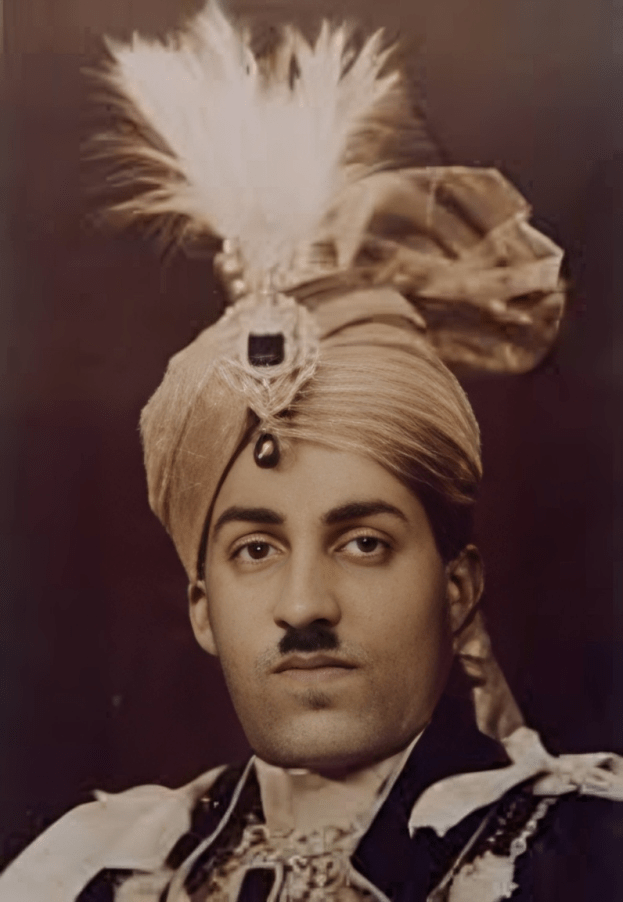Nawab Sadiq Muhammad Khan V was born in 1904. His father Nawab Muhammad Bahawal Khan Bahadur Abbasi died in 1907 and thus at an age of only three years, he became the ruler of the State of Bahawalpur. At the age of 8, he attended the Coronation Darbar in 1911 and commanded his State Imperial Service Camel Corps. From 1912-1914 he sojourned in England. He received his education from Aitchison College Lahore during 1915-1920. He took his administrative training and course of military instruction at Quetta. In 1922 he received the rank of lieutenant and was attached to 21st King George’s Own Central India House. In 1924 he was invested the Knighthood of the star of India and in 1931 at Buckingham Palace, he received from his Imperial Majesty dignity of the G.C.I.E. In 1933 he was promoted to the rank of Major, in 1940 to Lt. Colonel and in 1946 to Major General.
In 1923 he was made the President of Council of Regency. The council was abolished in 1924 and he took the reigns of the State of Bahawalpur. His most important contribution was the Sutluj Valley Project that started in 1921. The project was to irrigate the valley of Sutluj River. A pact was signed according to which three headworks were built on the River Sutluj. The expenditure was shared by British and the State of Bahawalpur. As a result agricultural sector flourished leading to the prosperity of the people in the Bahawalpur region. Thenceforth the irrigation didn’t depend on wells and canals. Nawab requested for some loan from the Indian government during the Sutluj River Project to lay down the terms and conditions of the loan an eminent lawyer M.A Jinnah was appointed. This was the beginning of the friendship between Quaid-i-Azam and the Nawab of Bahalpur.
Nawab Sadiq took active part in the World War II that started in 1939. Apart from military help Nawab also gave financial assistance to the British Government. In May 1935 Quetta was jolted by a severe earthquake killing thousands of people. Those who survived were taken to Lahore by a daily train service. As this train used to reach Bahawalpur in the afternoons, Nawab ordered to give food, clothes and monetary help to the affected people and to supervise the arrangement, he himself daily visited the railway station. Another contribution he made to the promotion and development of Urdu language in the State of Bahawalpur. It began to be used as the official language in the administrative work of the state. During his era the decisions of the High Court were also written in Urdu language.
After partition Nawab proved to be very helpful and generous to the government of Pakistan. He gave seventy million rupees to the government and the salaries of all the government departments for one month were also drawn from the treasury of Bahawalpur state. He gifted his private property to the University of the Punjab, King Edward Medical College and the Mosque of Aitchison College, Lahore.
At the time of partition all the princely states of the subcontinent were given a choice to join either Pakistan or India. For convincing Nawab to join India, Pandit Nehru went to him while he was in London and offered various incentives in this regard but he didn’t accept them. On 5th October 1947 he signed an agreement with the government of Pakistan according to which Bahawalpur State joined Pakistan. Thus the State of Bahawalpur was the first state that joined Pakistan. The main factor was of course the Islamic sentiments of the Muslims who were in majority in the Bahawalpur State. Moreover, Nawab and Quaid-i-Azam were close friends and they had great respect for each other even before the creation of Pakistan. The Ameer of Bahawalpur Refugee Relief and Rehabilitation Fund was instituted in 1947 for providing a central organization for the relief of the refugees. The Quaid acknowledged the valuable contribution of the Bahawalpur State for the rehabilitation of the refugees.
In 1955 an accord was signed between Nawab Sadiq Muhammad and General Ghulam Muhammad according to which Bahawalpur State became the part of the province of West Pakistan and Ex-Nawab began to receive yearly stipend of 32 lakh rupees.
In May 1966 Nawab Sadiq died in London; his dead body was brought to Bahawalpur and was buried in his ancestral graveyard of Derawer Fort.
This article was last updated on Friday, Jan 04, 2008






